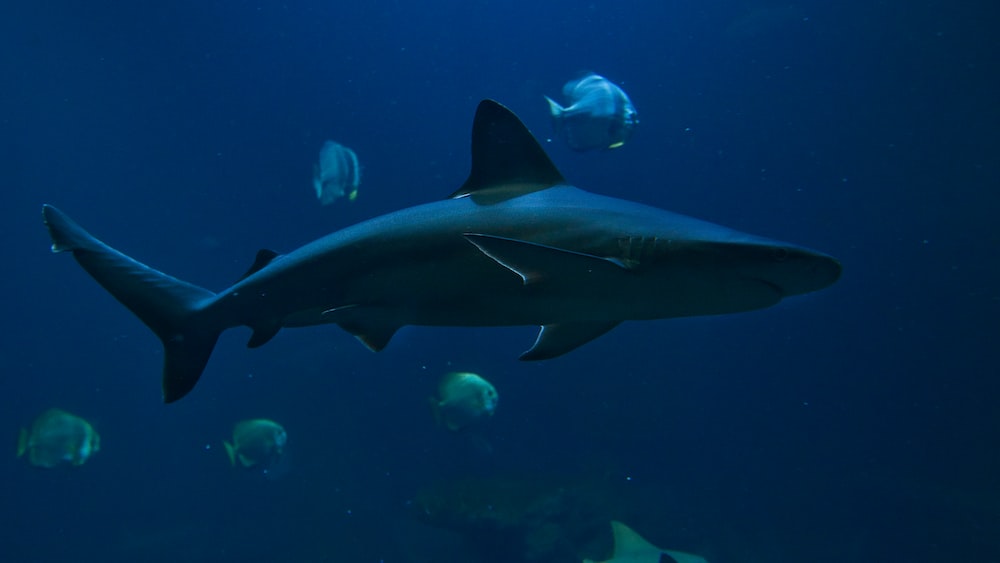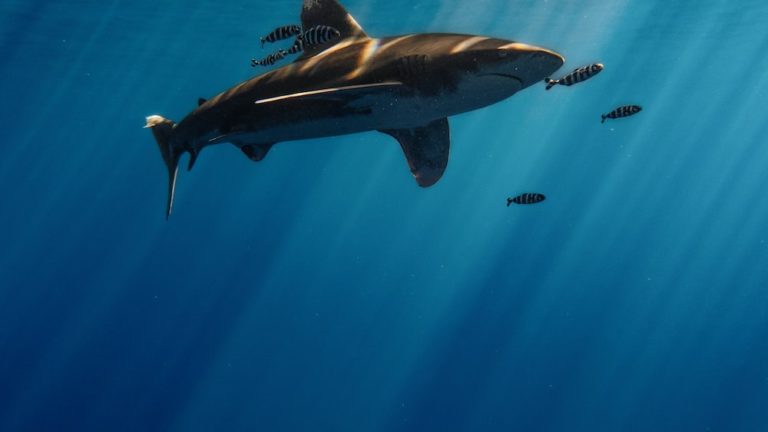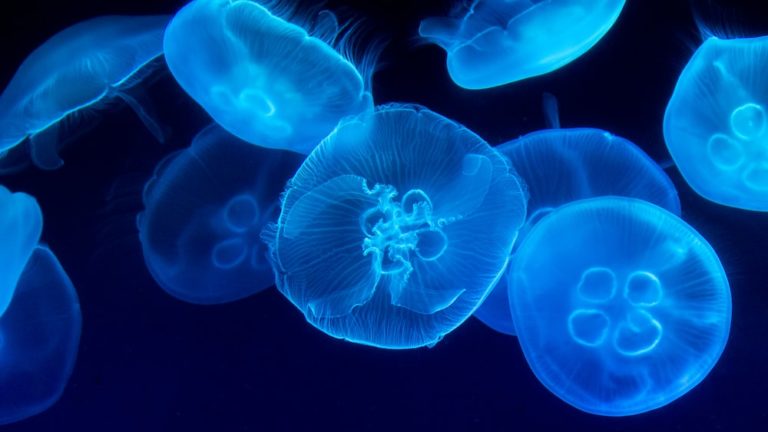Discovering The Truth: Do Sharks Swim Backwards?
Discovering The Truth: Do Sharks Swim Backwards?
The mysterious depths of the ocean are home to the apex predators of the sea – sharks. As a marine life enthusiast and conservationist, you’ve likely pondered over their elegant, yet powerful swimming abilities. One intriguing question that captures the curiosity of many is: do sharks swim backwards? This captivating query isn’t just small talk at a diver’s get-together; it delves into the fundamental aspects of shark physiology and behavior.
Key Points:
- Sharks do not have the capability to swim backwards due to their anatomy and physiology.
- Their musculature, fins, and body design are optimized for efficient forward movement in water.
- Observations of sharks in controlled environments and stress-induced situations have shown rare instances of appearing to move in reverse, but this is not intentional swimming.
- Sharks rely on their forward motion and maneuverability to navigate their environment and respond to threats, rather than swimming backwards.
- Their unique swimming patterns are essential for hunting, breathing, and long-distance migration, showcasing the critical nature of their unidirectional locomotion.
- While some species of sharks must keep moving to breathe, there are variations in breathing methods across species, dispelling the myth that sharks universally die if they stop swimming.
- The exploration of shark behavior and abilities serves to deepen understanding and respect for their role in marine ecosystems, highlighting the need for conservation efforts.
Diving into this topic, we’ll unearth the truth behind the motion of these majestic creatures. As eco-adventurers, we not only aim to satisfy our curiosity but also to foster a deeper understanding of the marine life we are so passionate about. Let’s embark on an educational odyssey into the locomotion of sharks, exploring the fact versus fiction that surrounds their ability or inability to swim in reverse.
By dispelling myths and unveiling scientific truths, we not only quench our thirst for knowledge but also equip ourselves with the insights needed to advocate for these misunderstood animals. Join me as we navigate the waters of truth and discover once and for all – do sharks indeed have a gear in reverse?
Debunking Shark Movement Myths
As enthusiasts of the deep blue, we often come across fascinating tales about marine life. However, when it comes to the capabilities of sharks, it’s crucial to separate the real from the speculative. In this prevailing discussion about whether sharks can execute the peculiar act of swimming backwards, a myriad of myths beg to be demystified. Prepare to dive below the surface of these aquatic tall tales and resurface with clear, scientific evidence that sheds light on the actual swimming patterns of sharks.
Common Misconceptions About Sharks Swimming
Despite being one of the most discussed fish in the sea, sharks are often subject to misconceptions, especially when it involves their swimming prowess. A common fallacy is that these oceanic wonders can glide backwards as effortlessly as they do forwards. Many believe that if trapped, a shark can simply hit the reverse switch and extract itself from the predicament. This imagery is as fetching as it is fictional.
Another interesting notion is that sharks, like some kind of underwater automobile, possess mighty engines within that give them an all-directional swimming capability. To the disappointment of some and the relief of others, sharks are not equipped with a built-in navigation system that includes a rearview mirror. Instead, their movement is governed by more rigid physical principles, which we’ll explore in greater detail.
Sharks are often misunderstood, and the misconception that they can effortlessly swim backward is just a myth.
The Reality of Shark Locomotion
In the grand oceanic tapestry, sharks have a unique place – apex predators that are as misunderstood as they are studied. The truth is, despite the fascination and fear they inspire, sharks are bound by the laws of physics and biology when it comes to movement. There is no reverse gear in a shark’s world; due to their anatomy and hydrodynamics, swimming backwards is not part of their repertoire.
Furthermore, when addressing the question, “do sharks swim backwards”, experts look towards the evolutionary design of these animals. Their body plan, perfected over millions of years, is geared for efficient forward movement, optimizing them for hunting and navigating the expansive ocean. And while this might seem limiting, it is this very specialization that has made them one of the most successful predators on Earth.
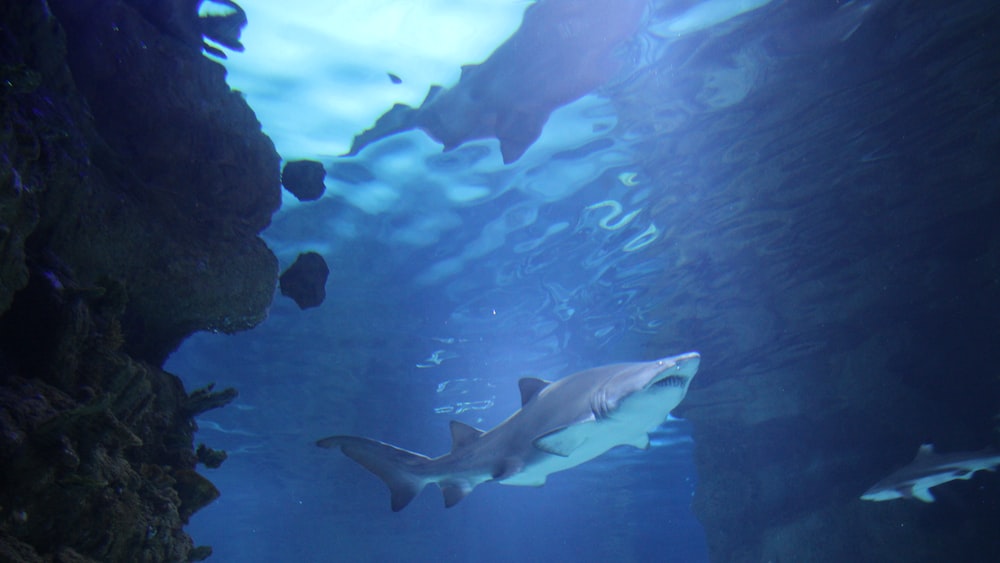
The Anatomy of a Shark
The anatomy of a shark is a marvel of evolutionary engineering, a blueprint primed for survival in the watery realm. With bodies that are streamlined for impeccable hydrodynamics, sharks cut through the water with minimal resistance. The sophisticated design of their musculature and fins plays a critical role in enabling these powerful movements, but also sets the boundaries of their locomotive capabilities.
How Shark Musculature Influences Movement
Sharks boast a musculature that is purpose-built for the open waters. It works in a two-part system, where one group of muscles contractions propels the shark forward while the other group prepares to contract next. This formidable kinetic dance allows for bursts of speed and sustained cruising, showcasing an impressive display of marine athleticism.
The myomeres, bands of muscle segmenting the body, work in concert to produce the characteristic undulating motion of a shark’s swim. This rhythmic movement not only makes the act of forward propulsion incredibly efficient, but it also exemplifies why reversing is not a trick in their skill set. The myomeres are designed to push water one way – and that’s decidedly not backwards.
The Role of Fins in Shark Mobility
Now, let’s talk fins – the rudders of the sea. The shark’s pectoral fins act like wingtips, stabilizing and steering, while the towering dorsal fin prevents rolling and aids in sudden directional shifts. But perhaps most iconic is the caudal fin, or the tail, which functions as the main propeller, pushing water behind the shark to jet them forward.
Movement in sharks is a whole-body endeavor, but it’s the fins that fine-tune their navigation. However, these tools for traversing the oceanic expanse don’t allow for backpedaling. Fins are built for a forward thrust and providing lift, much like an airplane’s wing, making a backward fin-flip more than a minor challenge – it’s a bio-mechanical impossibility.
The Physics of Shark Swimming
Swimming in water is all about maneuvering through a dense medium, and for sharks, the physics are inarguably geared towards forward motion. Understanding the interplay between shark anatomy and the properties of water is key to grasping why these predators are streamlined swimmers, relentlessly pushing ahead in their underwater domain.
Why Sharks Are Designed to Swim Forward
If you’ve wondered “do sharks swim backwards,” consider the physics of hydrodynamics. Sharks are marvels of design when it comes to navigating the water. Their bodies are shaped to reduce drag, allowing them to cut through the ocean with ease. Sharks, quite literally, are forward-moving machines – the torpedo-shaped physique isn’t just for show; it minimizes resistance, harnessing the power of every tail wag.
Moreover, sharks have a buoyancy system that is significantly different from most fish. They lack the swim bladder – a balloon-like organ that allows fish to hover and recoil in place. Instead, sharks rely on their oily liver and dynamic swimming to maintain depth control. This internal setup doesn’t support a backward jaunt; it’s all about the forward cruise.
Sharks are marvels of design with a torpedo-shaped physique that minimizes resistance, allowing them to cut through the water with ease.
The Challenges of Backward Movement in Water
The notion of sharks engaging in a bit of reverse is fraught with biomechanical challenges. Swimming backwards in water is akin to asking a bird to fly backwards – it can be momentarily fluttered but not sustainably achieved. Sharks can’t simply swim in reverse due to water resistance and their body’s lack of reverse locomotive adaptability.
Imagine trying to push a sleek sedan back-first through a wall of syrup – that’s somewhat how it would be for a shark attempting to swim back through water. Water’s viscosity and the unidirectional design of sharks conspire to make backward movement not just challenging, but unfeasible. Their evolution has fine-tuned them for the straightforward path, an expressway with no exits for U-turns.
Behavioral Observations of Sharks
Moving beyond the realm of physics and anatomy, behavioral observations of sharks provide insight into their real-world maneuvering tactics. By studying these magnificent creatures in their natural habitat, researchers have amassed volumes of data that offer a glimpse at how sharks handle navigation and potential entrapments within their aquatic territories.
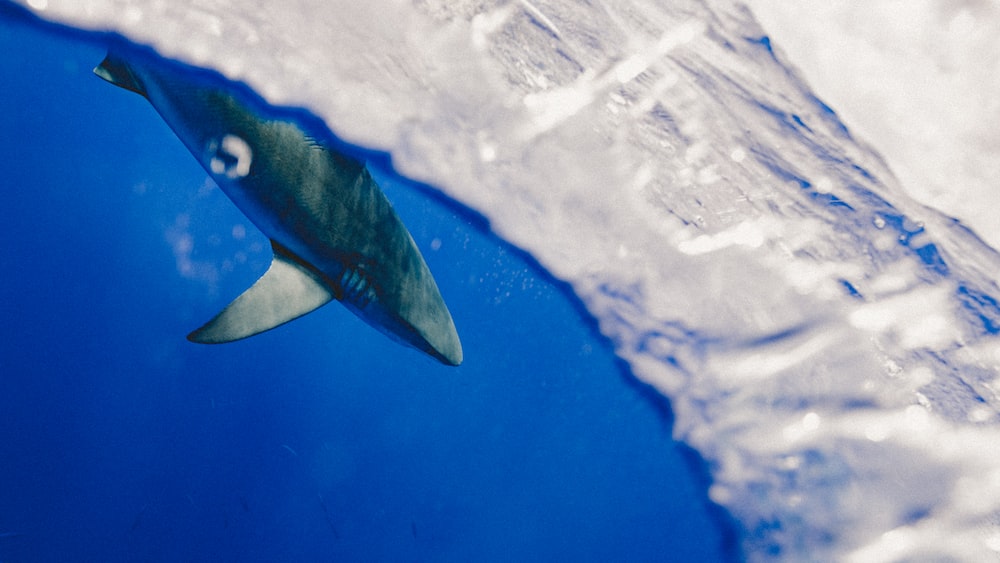
Instances of Sharks in Reverse Motion
As we untangle the question of “do sharks swim backwards,” the evidence tends to lean quite strongly to the negative. However, there are anecdotal sightings of sharks appearing to move in reverse. These are rare and typically involve man-induced scenarios such as being temporarily caught in fishing nets or other restraints.
In these stress-induced situations, what might seem like backward locomotion is usually a result of the shark’s attempts at wriggling free, often unsuccessful due to their physiological constraints. It’s a misconception to interpret these flustered, occasional back-flips as intentional swimming maneuvers. When observed in a controlled habitat like aquariums, these rare behaviors are sparked not by a desire to retreat, but as a frantic reaction to stimuli.
How Sharks Respond to Obstacles and Threats
Despite their inability to swim backwards, sharks have evolved other impressive strategies to navigate their environments and react to threats. Their flexible bodies allow them to perform tight turns and sudden changes in direction with startling agility. When faced with an obstacle, a shark doesn’t think twice; it contorts and darts forward, relying on its forward momentum and maneuverability to evade or pursue.
Sharks, like all creatures, exhibit instinctual behaviors conducive to survival. In the rare instances where they find themselves blocked, they exhibit a level of resilience and adaptability in their responses. Rather than engaging in an impossible reverse, they leverage their powerful forward motion to remove themselves from the situation and continue on their path.
Comparative Analysis: Sharks vs. Other Marine Animals
Sharks have navigated the world’s oceans for over 400 million years, showcasing a refined blueprint for aquatic life. However, how do their swimming capabilities stack up against their marine counterparts? This comparative analysis dives into the deep to reveal the nuances and prowess that set these predators apart in the watery realm.
How Do Sharks’ Swimming Capabilities Compare to Other Fish?
Sharks possess a unique combination of musculature and fin design, which provides them with an impressive hydrodynamic advantage. Most fish exhibit a lateral undulation of their bodies to propel through water, a method that generally allows for agile and flexible movement. In contrast, sharks mainly utilize their powerful tails to thrust forward, achieving bursts of speed when hunting prey.
Additionally, many bony fish have the ability to swim backwards by coordinating their fin movements, a skill sharks largely lack due to their distinctive physiology. Sharks’ fins are optimized for stabilization, steering, and sometimes braking, but not for reverse locomotion. Their pectoral fins, unlike the more flexible fins of other fish, act more like airplane wings, providing lift and aiding in their sleek, forward-only cruise through the ocean depths.
While fish such as the eel display remarkable versatility with their full-body undulations, allowing them to navigate through complex environments, sharks demonstrate a different form of mastery. The streamlined body of a shark cuts through water like a knife, highlighting an evolutionarily perfected design for speed and endurance that’s unmatched in many other species.
Sharks have a unique musculature and fin design that allows them to achieve bursts of speed and unmatched hydrodynamic advantage while hunting prey.
Unique Swimming Techniques Amongst Aquatic Predators
Aquatic predators have evolved various incredible techniques to dominate their underwater territories. The manta ray, with its celestial wingspan, can glide gracefully, making minute adjustments with its lobes to navigate the reefs and open ocean. In contrast, the nimble squid escapes predation through jet-propelled bursts, releasing a cloud of ink as it reverses direction with astonishing swiftness.
Octopuses engage in a somewhat surreptitious ballet, using their eight arms to crawl, and their siphons to steer or make hasty retreats, often employing reverse propulsion elegantly. Meanwhile, sharks, particularly species like the Great White, deploy ambush tactics from below, relying on stealth and an explosive forward charge rather than diverse maneuverability.
Even amongst sharks, there is variety in hunting strategies. The hammerhead’s cephalofoil assists in scanning the ocean floor for hidden meals, while the thresher shark uses its elongated tail to stun prey, demonstrating how various adaptations serve specialized roles in predators’ quest for survival.
The Impact of Swimming Patterns on Shark Survival
The dynamic swimming patterns of sharks are more than just a means of getting from point A to point B; they are intrinsic to their very survival. These patterns influence everything from hunting strategies to migration, ensuring that sharks remain as some of the ocean’s most proficient hunters.
The Significance of Forward Movement for Shark Health
Forward movement is essential for sharks not only to hunt and navigate but also to breathe. Most sharks must keep moving to ensure water flows over their gills for oxygen exchange. This physiological requirement ties directly to their unique anatomy and emphasizes the critical nature of their unidirectional locomotion.
When it comes to long-distance migration, the forward thrust provided by a shark’s tail is energy efficient, enabling them to traverse entire ocean basins with a mix of steady cruising and periodic sprints. Their forward propulsion is so essential that their rest periods are often characterized by a slower, continuous movement rather than a full stop.
Myths About Sharks Dying If They Stop Swimming
There’s a common myth suggesting that sharks will die if they stop swimming. While it holds some truth, the reality is more nuanced. Obligate ram ventilators like the Great White shark must indeed keep moving to breathe, but many species of sharks have spiracles behind their eyes, allowing them to pull in water while stationary, dispelling the myth as a universal truth.
Sharks that rest on the ocean floor, like the nurse shark, can actively pump water across their gills. Therefore, while continuous swimming is vital for some species, it is not a singular blueprint for shark survival. Adaptation and versatility in breathing methods across species demonstrate nature’s remarkable ability to forge diversity within the confines of survival.
Ram ventilation, a process dependent on forward motion, certainly plays a key role for some sharks, but the ocean’s grand mosaic of life showcases various approaches to the challenges of underwater respiration.
FAQs
1. Can any species of shark move backwards under certain conditions?
In response to whether any species of shark can move backwards, it is important to clarify that sharks, due to their physiology, generally do not have the capability to actively swim backwards under normal conditions.
2. What happens if a shark is forced to swim backwards?
If a shark is forced to swim backwards, it could experience a condition known as gill slippage, where water flows in the wrong direction over the gills, leading to potential suffocation and disorientation.
3. Are there any marine animals that can swim backwards effectively?
Indeed, certain marine animals such as squid, octopuses, and scallops can swim backwards effectively, utilizing unique adaptations like jet propulsion or coordinated fin movements.
4. How do sharks maneuver if they cannot swim backwards?
To maneuver without the ability to swim backwards, sharks rely on their pectoral and dorsal fins for steering and stabilization, as well as incremental adjustments with their tail fin to change direction or maneuver around obstacles.
Conclusion
As we resurface from our deep dive into the abilities of sharks, it is clear that the ocean’s currents hold many answers to the complexities of marine life. The question of whether sharks swim backwards has led us on a fascinating journey through their anatomical marvels and the evolutionary trade-offs they’ve embraced for survival. It seems the artistry of shark movement is a dance with the ocean, where every glide and pivot underscores their adaptation to a life in perpetual motion.
Exploring the depths of shark behavior offers more than just biological insights; it serves as a vessel for us to understand the delicate balance of our marine ecosystems. Acknowledging the unique abilities of these majestic creatures helps to foster a deeper respect for their role in the ocean’s health and their need for conservation.
As marine life enthusiasts, eco-adventurers, and conservationists who delight in the ocean’s wonders, it is our responsibility to embrace and advocate for the well-being of its inhabitants. Every ripple we make, every tale we share, has the potential to create waves of change. So next time you’re pondering, “do sharks swim backwards?” consider it a prompt to delve deeper into aquatic conservation. Until our next subaquatic narrative, keep championing our oceanic allies. Warm currents and safe dives,
Jasper Flynn.

